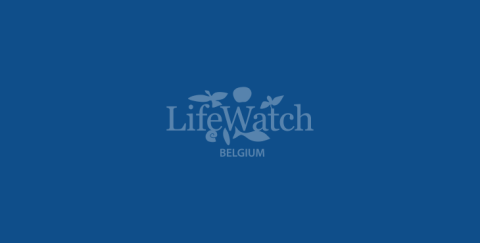The renewed Belgian LifeWatch website is launched!
The renewed LifeWatch.be website brings together all contributions of the Belgian LifeWatch partners.

In 2012, Belgium started constructing its LifeWatch infrastructure. The initial Belgian LifeWatch partners involved were the Flanders Marine Institute (VLIZ) and the Research Institute for Nature and Forest (INBO), funded through the Hercules Foundation. In 2013, the Earth and Life Institute of the Université catholique de Louvain (UCL) started their participation, based on support from the Wallonia-Brussels Federation. In 2014, UCL joined forces with the Biosystems Engineering Department of the Université de Liège/Gembloux-ABT. This LifeWatch Wallonia-Brussel team is further financed through the Wallonia-Brussels Federation. Later that same year, the Royal Belgian Institute of Natural Sciences (RBINS) joined the LifeWatch Belgium Team, coordinating the federal contributions. RBINS is collaborating closely with the Royal Museum for Central Africa (RMCA). Another federal partner who joined in 2014 is the Belgian Biodiversity Platform.
Since the start of the project, the number of partners increased, resulting in a multiplication of activities and generated data. Since the initial LifeWatch.be website was rather focused on the Flemish contributions and data, a new website has been developed equally representing all Belgian LifeWatch activities.
The Project section gives a short description of all Belgian LifeWatch partners and contributions. In the section Sensors you can find a detailed description of all equipment and sensors that have been installed and are being used in the framework of the Belgian LifeWatch infrastructure. In the section Data you will find access to (1) the data generated by the local observatory, (2) an interactive geoportal providing access to thematic pan-European remote sensing data, (3) Antarctic observation data, (4) data rescued through the LifeWatch data archaeology activities, and (5) several global databases and data systems. Through the e-Lab you can access an online interface where the majority of the web services built by the Belgian LifeWatch partners are offered. The section Taxonomic Backbone explains how a taxonomic backbone is being constructed as a central part of the European LifeWatch infrastructure.
Since the start of the project, the number of partners increased, resulting in a multiplication of activities and generated data. Since the initial LifeWatch.be website was rather focused on the Flemish contributions and data, a new website has been developed equally representing all Belgian LifeWatch activities.
The Project section gives a short description of all Belgian LifeWatch partners and contributions. In the section Sensors you can find a detailed description of all equipment and sensors that have been installed and are being used in the framework of the Belgian LifeWatch infrastructure. In the section Data you will find access to (1) the data generated by the local observatory, (2) an interactive geoportal providing access to thematic pan-European remote sensing data, (3) Antarctic observation data, (4) data rescued through the LifeWatch data archaeology activities, and (5) several global databases and data systems. Through the e-Lab you can access an online interface where the majority of the web services built by the Belgian LifeWatch partners are offered. The section Taxonomic Backbone explains how a taxonomic backbone is being constructed as a central part of the European LifeWatch infrastructure.



